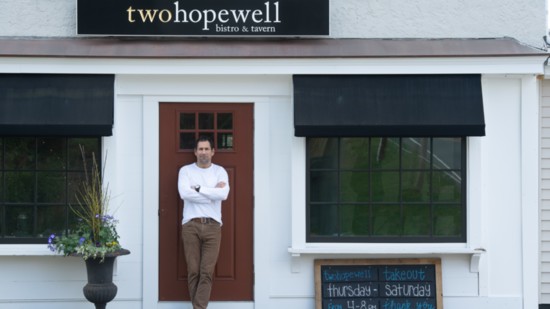One of the hardest hit small businesses during the recent quarantine have been restaurants, and most local eatery owners have worked overtime trying to keep their businesses afloat.
For Bill Driggs, co-owner of four local restaurants, that struggle has involved finding ways to keep as much of his staff employed as possible, shifting business models to a take-out only option and even trying to make the local community feel safe and normal during an abnormal time.
“Restaurants that are still open offer people a sense of solace and a semblance of normalcy when things are not normal,” Driggs says. “What we’re doing, hopefully, is bringing a little bit of hope back to the community. We’re making the local community feel included and we’re trying to find ways to let them know we’re still here. We are local, myself and my brother, we live in Glastonbury and it was important for us to stay here and connect with people as much as possible.”
In return, he adds, loyal customers have sought to bring solace to the restaurant’s workers.
“The support from the community, for us, has been great. I can’t stress enough how much they’ve reached out to us. We’ve been here for a while with our restaurants so we have a lot of great local support. People are supporting us by buying gift certificates and some people are being very generous with gratuities and tips. We get phone calls and letters of support and social media support.”
Driggs and his brother, Adam Driggs, along with a partner, Jon Lynch, own four restaurants here in Glastonbury, 2 Hopewell Bistro & Bar, Birch Hill Tavern, Sayulita and The Beamhouse. Combined, they employ dozens of people. But after the Coronavirus hit this winter and Connecticut issued stay-at-home orders to help stop the spread of the disease, the four restaurants, like most restaurants in the state, were hard hit. They scaled back operations by nearly 70 percent.
The impact, Bill Driggs says, was sudden and dramatic.
“Obviously, we had to make an immediate shift to have this business go to a new way of operating, we had to figure that out for all four of our restaurants. We went to curbside delivery."
Before the virus struck, Driggs says, the four restaurants collectively employed about 130 full and part time workers. That number shrunk to 30 when the restaurants had to shutter their doors. But he and his partners were able to keep offering all of the workers benefits during the furlough.
At the height of the shutdown, he says, sales fell off by about 70 percent but he and his partners had to work even harder to keep the businesses afloat.
“It’s more work now doing 70 percent less in sales than when we were at 100 percent capacity,” he says.
He and his partners are hoping that by June things will start getting back to normal and his restaurant group can reopen their doors. But “normal,” Driggs says, will likely not look or feel the same as before the virus struck.
‘I’m pretty optimistic we can get back on track. It will be a struggle for everyone, losing a couple months of revenue and employees losing two months of income is going to be awful for everyone. Social distancing will continue to a different degree, but obviously people want to get out and get back to a somewhat normal life.”
